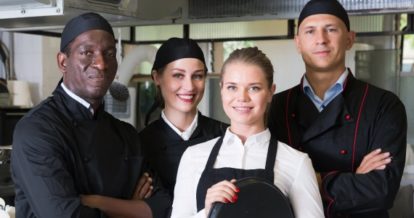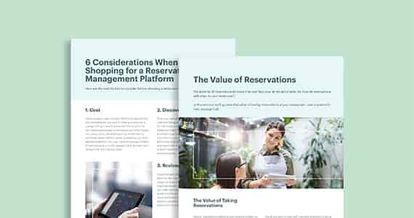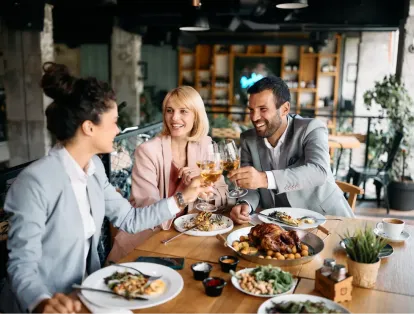Whether you’re hiring servers or dishwashers, the first step in finding the right people is writing clear and compelling restaurant job descriptions. A job description tells job seekers exactly what you’re looking for and helps candidates understand where they might be a good fit in your restaurant.
Of course, in order to write great restaurant job descriptions, you first need to know what restaurant positions you need to fill, why they’re important, and how to advertise them to prospective candidates.
In this guide to restaurant job titles and descriptions, you’ll learn:
- Why having staff in the right restaurant roles is crucial to the success of your business
- Restaurant job descriptions for every role you’ll ever need – split up by type of venue
Are you ready to form your dream team?
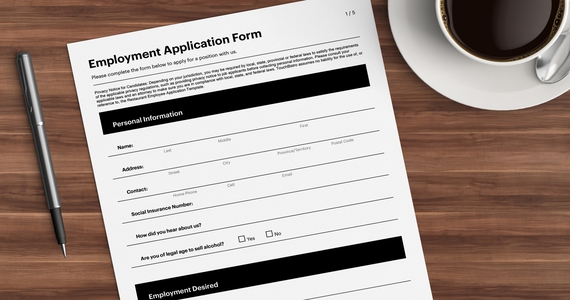
Streamline the hiring process with our printable restaurant job application template.
16 Restaurant Job Descriptions and Titles
So who do you need in your restaurant? We’re sharing all of the restaurant roles you’ll ever need, plus job descriptions for each one.
For your convenience, we’ve divided our list into three categories: general restaurant roles (ones that apply to any type of venue), QSR roles, and FSR roles.
General Restaurant Job Descriptions
These are the restaurant jobs that are universally relevant.
1. General Manager Job Description
A restaurant’s general manager makes sure that business operations run smoothly. This role serves as the glue that brings together the restaurant owner and employees.
Sample restaurant manager job description
A restaurant’s general manager, or GM, is responsible for overseeing operations. In any restaurant manager job description, you should mention duties that include hiring and training staff, performing employee evaluations, bookkeeping, ordering inventory, and leading initiatives to grow the business, like marketing campaigns and partnerships. You should also include these role-specific responsibilities in your restaurant training manual.
Top characteristics to include in restaurant manager job descriptions:
- Strong leader
- Good at delegating
- Innovative
2. Assistant Manager Job Description
The assistant manager serves as the general manager’s right-hand ally.
Sample restaurant manager job description
The assistant manager supports the general manager through a variety of tasks. Assistant managers may be asked to lead internal initiatives like running staff meetings, creating employee schedules, keeping track of inventory, assisting with hiring. Assistant managers also support external initiatives like executing marketing campaigns and interacting with customers.
Top characteristics for an assistant manager:
- Takes initiative but can also follow directions
- Anticipates general manager’s needs
- Works well with others
3. Executive Chef Job Description
The executive chef is in charge of the kitchen – one of the most important jobs in restaurants.
Sample executive chef job description
The executive chef is responsible for all aspects of the food that comes out of the restaurant’s kitchen. This includes overseeing kitchen operations, planning the menu, developing recipes, and hiring back-of-house (BOH) staff.
Top characteristics to include in a Chef job description:
- Management experience
- Culinary school training
- Works well in a high-pressure environment
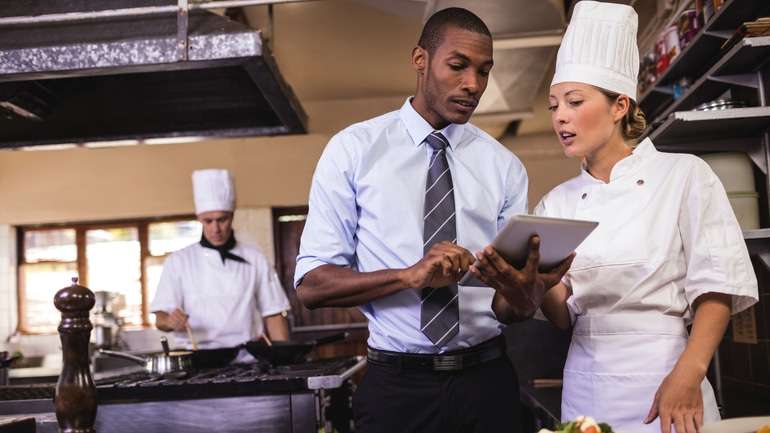
4. Sous Chef Job Description
The sous chef is to the executive chef what an assistant manager is to the GM.
Sample sous chef job description
While the executive chef is the kitchen’s strategy mastermind, the sous chef is responsible for executing the daily activities that are necessary in order to make that vision come to life. These tasks can include training and overseeing back of house staff, managing inventory, and preparing food, as needed.
Top characteristics for a Sous Chef:
- Can lead a team and also follow directions
- Anticipates executive chef’s needs
- Culinary school training or prior culinary experience
5. Prep Cook Job Description
Prep cooks do the groundwork in the kitchen to make the jobs of their teammates easier.
Sample prep cook job description
A prep cook’s responsibilities include preparing food by washing produce and raw goods, chopping ingredients, and setting up cooking stations. Prep cooks are also responsible for storing food safely and cleaning up workstations.
Top characteristics for a prep cook:
- Organized
- Clean
- Has a food handlers permit

Streamline the hiring process with our printable restaurant job application template.
6. Line Cook Job Description
One of the most vital positions in a restaurant, a line cook picks up where the prep cook leaves off by executing orders.
Sample line cook job description
Line cooks are assigned to a cooking station (grilling, sauteing, frying, etc.) and are responsible for working with their teammates to execute orders in a timely manner.
Top characteristics to include in a Line Cook job description:
- Works well under pressure
- Can stand for several hours
- Has a food handlers permit
7. Dishwasher Job Description
Dishwashers are the unsung heroes of the kitchen. They make sure that your guests have something clean to eat off of.
A sample of a job description for the role
A restaurant dishwasher’s main role is cleaning dishes, silverware, and glassware after guests have used it. They are responsible for keeping the dishwashing station clean and safe to use. Dishwashers may also play a role in cleaning food preparation surfaces, setting tables, keeping dishes organized, and managing dish inventory.
Top characteristics for a dishwasher:
- Can stand for several hours
- Can carry heavy loads
- Is knowledgeable about restaurant sanitation requirements
Quick Service Restaurant Job Descriptions
QSRs require restaurant roles that aren’t needed in full-service venues. These are the positions you need to fill in a quick service restaurant and sample job descriptions for each one.

8. Cashier Job Description
As the primary front-of-house role, cashiers are the face of the business at QSRs.
A sample job description for cashiers
Cashiers are responsible for serving customers by greeting them, taking their orders, and answering questions about menu items. Cashiers are also in charge of financial duties like processing payments, manning the POS system, and managing the cash box.
Top characteristics to include in the restaurant job description for a cashier:
- Friendly
- Knows how to use a POS system
- Can make change quickly
9. Barista Job Description
Baristas give the people what they want (coffee!) while working a back-of-house role that is uniquely positioned at the front of the house.
Sample barista job description
Baristas are responsible for fulfilling orders at cafes, often in high-pressure environments. They must be able to operate an espresso machine and prepare coffee and espresso beverages (bonus points for latte art). Baristas may also be required to heat up food for customers.
Top characteristics for a barista job description:
- Can master many beverage recipes
- Works well under pressure
- Friendly

Streamline the hiring process with our printable restaurant job application template.
Full Service Restaurant Job Descriptions
Like QSRs, FSRs require some unique restaurant roles. Below, we dive into the all the restaurant job titles for full-service venues.
10. Server Job Description
Servers are responsible for the customer experience, making their role one of the most important positions in a restaurant.
Sample server job description
A restaurant server has many responsibilities including welcoming customers, taking beverage and food orders, conducting satisfaction checks, placing orders using the POS, serving as liaison between the kitchen and customers if there are any problems, and collecting payments for meals. Servers should be knowledgeable about menu items and be able to answer questions about ingredients and dietary restrictions.
Top characteristics to include in a server job description:
- Friendly
- Works well under pressure
- Can juggle a lot of tasks at once
11. Host Job Description
The host, known as the “maître d’” in fine dining establishments, is the first person a customer interacts with when they enter a restaurant, so they set the tone for the customer’s meal.
A sample of a job description for a restaurant host
Hosts are responsible for creating an excellent first impression for guests. They need to greet customers warmly and promptly find them seats, usually by using the POS or reservation management system. Hosts must also answer any questions for walk-ins. They take reservations over the phone and handle incoming online reservations. Hosts also manage the waitlist, which involves setting guest expectations during busy wait times.
Top characteristics for a host:
- Friendly
- Organized
- Works well under pressure
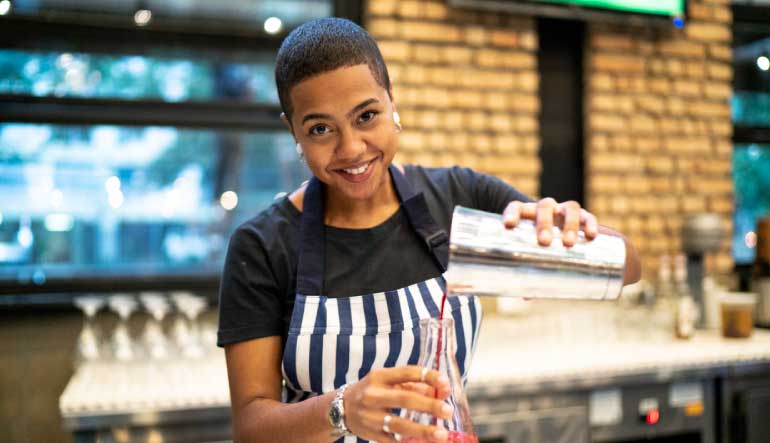
12. Bartender Job Description
Bartenders are the liquor purveyors serving up everything from well drinks to craft cocktails.
Bartender job description
A bartender, or bar manager, is responsible for developing and executing your bar’s beverage program. They must have classic cocktail recipes memorized in order to fulfill beverage orders quickly. Bartenders fulfill orders from customers seated at the bar and orders that are placed by servers.
Top characteristics for a bartender
- Friendly
- Great multitasker
- Learns drink recipes quickly or has past knowledge of them
13. Barback Job Description
The barback assists the bartender to ensure that bar operations run smoothly and the bartender never runs out of supplies.
A sample of a job description for a barback
Barbacks assist bartenders by preparing garnishes, keeping track of ice, restocking inventory, and washing glassware. While this role is customer-facing, barbacks do not typically interact with customers.
Top characteristics for a barback:
- Organized
- Anticipates bartender’s needs
- Stealthy – can do their work without getting in the way of bartenders or customers
14. Busser Job Description
Bussers are behind-the-scenes magicians that make servers look good.
A sample of a job description for the role
A busser’s main duty is clearing dishes off of tables after customers have finished eating or between courses. A good restaurant busser will clear a table as unobtrusively as possible. Sometimes bussers are also responsible for refilling glasses of water.
Top characteristics for a busser:
- Unobtrusive
- Observant
- Can carry heavy loads

Streamline the hiring process with our printable restaurant job application template.
15. Food Runner Job Description
Runners are the unsung heroes of the front of the house. They bring customers their meals and beverages.
A sample of a job description for the role
Runners are responsible for taking food and drinks from the kitchen or bar and bringing them to customers. Food runners should be familiar with the menu in order to be able to correctly identify dishes and serve them to customers.
Top characteristics for a runner:
- Can carry heavy loads
- Knowledgeable about the menu
- Friendly
16. Expeditor Description
The expeditor is particularly important at busy times and fulfills one of the most important positions in a restaurant. While they don’t take orders, they help keep food flowing from the kitchen to hungry diners!
A sample of a job description for the role
The expeditor – or the expo – is responsible for ensuring that food is prepared and delivered well and efficiently. Not only do they deliver the food, but also ensure it has been properly prepared. Expeditors should work well in a fast-paced environment and be familiar with the menu to ensure dishes are up to standard.
Top characteristics for an expeditor:
- Quick on their feet
- Team player
- Good under pressure
Even with so many people in the industry, restaurant staffing can still be a challenge. Whether you are building your dream team from scratch or are looking to add or replace several roles, understanding what roles you need, and being able to write accurate restaurant job descriptions for them will help you get on the right track.

Learn how to hire, train, schedule, and retain restaurant staff.
Download your free employee handbook template
Sign up for our free weekly TouchBistro Newsletter

